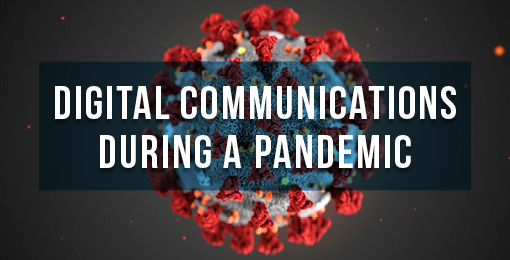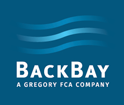Digital communications have been growing in adoption and importance. Some have put these initiatives off, whereas others have built out effective capabilities to continually interact with clients through digital touchpoints, be it email campaigns, social media, video, webinars and podcasts, and other channels. We’ve always advocated for these tactics simply as a way to leverage and amplify existing marketing and PR efforts. Now, with the spread and fear of the coronavirus – necessitating travel bans, canceled meetings and conferences, and remote work – it’s clear that digital communications is more important than ever before, from a marketing perspective but also through a business continuity lens.

Financial services companies, such as asset management firms, fintech companies, private equity and venture capital firms, and others, need to continue to plan, innovate, and build their brands to drive new business. They need to talk to their investors, clients and prospects, particularly during periods of stress when assurances and confidence is most important. But some of the important traditional means of doing so – face-to-face discussions, annual meetings, sales events, and industry conferences – are no longer available, and may not be for the foreseeable future.
How then to continue driving business growth to stay top of mind? Here are five tips to communicating and staying relevant in this era of “social distancing.”
- Media Relations. Reporters are still writing articles. While media tours will have to be put off until the virus subsides, thought leaders can still pitch interesting trend stories and share relevant news.. A “virtual media tour,” via videoconference, could help spokespeople stand out and many new business and client meetings will also be handled this way, so it could be a good way to familiarize yourself with the video-conferencing technologies, such as Microsoft, Google or Zoom.
- Social Media. LinkedIn and Twitter continue to present an important way to communicate with key audiences. Organic posts provide an easy way to reach your company’s followers, and can be enhanced by colleagues who “share” and “like” them through their own accounts. LinkedIn sponsored posts, for those pursuing more strategic messaging, allow companies to reach a broad audience of targeted prospective clients without breaking the bank. (Effective campaigns can be initiated for as little as $250 versus $6,000 to $10,000 commitments for print ads in trade publications). From a “reach” perspective, a pay-per-click campaign creates a “billboard effect” providing brand awareness to those who don’t click, while stimulating engagement among those who do.
- Content Development. Market disruptions of any kind create uncertainty, which can spiral into anxiety in the absence of clarity or direction. For thought leaders who can offer a perspective – whether it’s market insights, business strategy or anything else – relevant and timely content can instill trust and help fuel engagement. It also feeds into social media strategies and gives readers a reason to click on your post. Make sure you are sharing your professional perspectives on industry trends through blogs, articles and white papers. These themes, of course, can also be used to pitch the media for commentary.
- Podcasts and Videos. Podcasts and videos represent other mediums to share your perspectives on industry trends and to position the firm and its leadership as experts. Both can be shared on company websites, via social media or through email newsletters and offer another channel through which to stay in front of key constituencies.
- Email Blasts/Electronic Newsletters. Regular email blasts of firm news and quarterly electronic newsletters are an important tool to keep audiences informed of immediate news, aggregate developments over a set period time, and present evolving views on a regular basis. Many of our clients, for instance, have used email campaigns to keep their investors abreast in real time of new developments related to the coronavirus and how it is influencing the markets and their approach.
Clients and prospects want to hear from you. And you need to communicate, continue to support your brand and drive new business. Some firms are re-allocating funds from conferences and travel to content, PR and digital marketing. This is the time for decisive action and digital tools can be enablers to facilitate frequent communications and stay top of mind.


